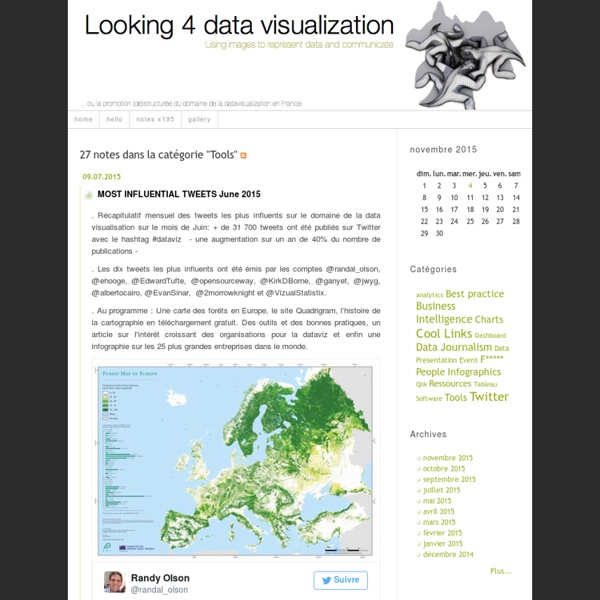If you’re disappointed with big data, you’re not paying attention
There has been a backlash lately against big data. From O’Reilly Media to the New Yorker, from Nassim Taleb to Kate Crawford, everyone is treating big data like a piñata. Gartner has dropped it into the “trough of disillusionment.” It might be provocative to call into question one of the hottest tech movements in generations, but it’s not really fair. Correlation versus causation versus “what’s good enough for the job” One of the biggest complaints — or, in some cases, proposed facts — about big data is that is relies more on correlation than causation in order to find its vaunted insights. Honestly, for song or product recommendations, who really cares? But in areas like medicine, finance and even marketing, people are becoming much more concerned with finding out “why” once they’ve found out “what.” Or if you’re a retail store, knowing that Mac users who visit your site tend to buy more-expensive products might make you want to show them more-expensive products.
How To Create Outstanding Modern Infographics
In this tutorial you will learn that data doesn't have to be boring, it can be beautiful! Learn how to use various graph tools, illustration techniques and typography to make an accurate and inspiring infographic in Adobe Illustrator. Start by using the Rectangle Tool (M) to draw a shape. The entire design is based on a grid of four columns. Condense the shape so it fits within the left-most guide and centre guide. Move the shape over to the right and add another guide to the centre here. Using the Rectangle Tool (M) draw a thin white box on the centre line that will be the width of the gap between the columns. Repeat the process for the other columns with your final result being below. I like to place the most important graphics first and work-in the ancillary charts and graphs afterwards. Early on you can experiment with placing a main graphic that will help give the piece some visual interest. Give the circles a variety of gradients. I'm using a variety of graphs in this infographic.
6 Great Interactive Data Visualization Tools (Part 2)
Welcome back for the second part of my series on interactive data visualization (dataviz) tools. In part one, we covered three cool tools for visualizing charts and graphs and many other data types on a webpage. In part two, we take a look at three more tools that are a bit more complex but have some incredible data visualization capabilities. 4. Exhibit is a very robust and customizable offering. Visualization Types Supported: Line Graphs, Maps, Scatter Plots, Multi-Filterable Lists, Timelines, Timeplots and more…with widgets! Flexible & Powerful Approach to Design I really like the approach of Exhibit, where data is presented through a "lens" – an HTML template shell that elements are placed into. Steep Learning Curve Like the other more complex libraries, there is more coding involved with Exhibit than most options, and having previous Javascript experience is definitely very helpful. 5. Javascript InfoVis Toolkit is a nice suite of tools for creating charts and graphs on a webpage.
Presentation Design 101: Making Data Compelling in a Presentation
This post was written by Aristotle Presentation philosopher, teacher, in search of the best gyro. What are the first words that come to mind when someone says “data”? Probably something along the lines of ‘boring’, ‘tedious’ and ‘complicated’. There’s little chance ‘exciting’ or ‘engaging’ came to mind. Below are several slides from a recent presentation in which we worked on both content and design, and all of them serve as great examples of how to make data compelling in a presentation. Immediately after glancing at this slide, the audience knows what fact is the most important on it, and that’s the number: 80%. The message here is that “85% of all risk comes from 5% of the population.” The message point here is: ”Over the next decade… Notice how we chose to include just two of the data points on this slide in an effort to emphasize the most important information; the presenter can speak to the other two data points if he or she desires. Let’s take a look at these two slides together.
Business Intelligence and user adoption: A Depp-esc disaster?
We’ve said it for a long time. In fact, we wrote a blog about it almost two years ago – What’s the Key Metric for Measuring BI Performance? The answer? “Simple – The rate of end-user adoption. That is, how many people in an organization who have access to BI software, actually use that software, and access the reports it generates, on a regular basis, to help them make operational and strategic business decisions.” And, much like the enduring partnership between Tim Burton and Johnny Depp – although their latest collaborative effort (Dark Shadows) received a dismal 42 percent rating on Rotten Tomatoes and had the LA Times wondering “has America fallen out of love with Johnny Depp?” Like our apparent overexposure to Burton and Depp’s quirky explorations of society’s social fringes, the necessity of BI user adoption is a message seemingly disregarded by an unreceptive audience – vendors and implementers alike. Research and advisory firms try again… Now back to that Aberdeen report… i. i. i.



